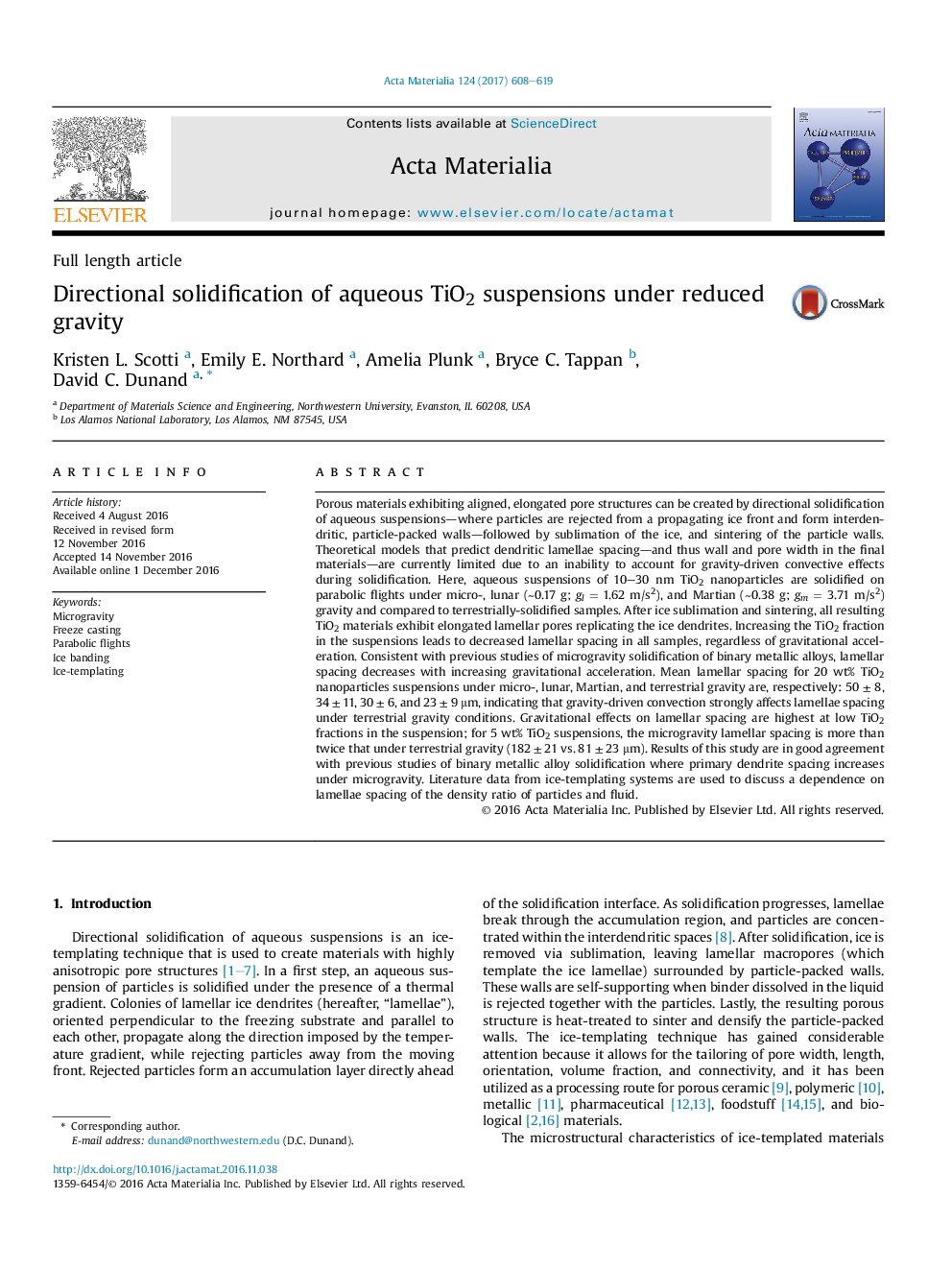| کد مقاله | کد نشریه | سال انتشار | مقاله انگلیسی | نسخه تمام متن |
|---|---|---|---|---|
| 5436479 | 1509552 | 2017 | 12 صفحه PDF | دانلود رایگان |

Porous materials exhibiting aligned, elongated pore structures can be created by directional solidification of aqueous suspensions—where particles are rejected from a propagating ice front and form interdendritic, particle-packed walls—followed by sublimation of the ice, and sintering of the particle walls. Theoretical models that predict dendritic lamellae spacing—and thus wall and pore width in the final materials—are currently limited due to an inability to account for gravity-driven convective effects during solidification. Here, aqueous suspensions of 10–30 nm TiO2 nanoparticles are solidified on parabolic flights under micro-, lunar (∼0.17 g; gl = 1.62 m/s2), and Martian (∼0.38 g; gm = 3.71 m/s2) gravity and compared to terrestrially-solidified samples. After ice sublimation and sintering, all resulting TiO2 materials exhibit elongated lamellar pores replicating the ice dendrites. Increasing the TiO2 fraction in the suspensions leads to decreased lamellar spacing in all samples, regardless of gravitational acceleration. Consistent with previous studies of microgravity solidification of binary metallic alloys, lamellar spacing decreases with increasing gravitational acceleration. Mean lamellar spacing for 20 wt% TiO2 nanoparticles suspensions under micro-, lunar, Martian, and terrestrial gravity are, respectively: 50 ± 8, 34 ± 11, 30 ± 6, and 23 ± 9 μm, indicating that gravity-driven convection strongly affects lamellae spacing under terrestrial gravity conditions. Gravitational effects on lamellar spacing are highest at low TiO2 fractions in the suspension; for 5 wt% TiO2 suspensions, the microgravity lamellar spacing is more than twice that under terrestrial gravity (182 ± 21 vs. 81 ± 23 μm). Results of this study are in good agreement with previous studies of binary metallic alloy solidification where primary dendrite spacing increases under microgravity. Literature data from ice-templating systems are used to discuss a dependence on lamellae spacing of the density ratio of particles and fluid.
Figure optionsDownload high-quality image (421 K)Download as PowerPoint slide
Journal: Acta Materialia - Volume 124, 1 February 2017, Pages 608–619